MRI Assessment of Gray and White Matter Distribution in Brodmann’s Areas of the Cortex in Patients With Schizophrenia With Good and Poor Outcomes
Abstract
Method
Subjects
Image Acquisition
Brodmann’s Area Measurements and Quantification of Tissue Type
Statistical Methods
Results
Dorsolateral Frontal, Temporal, and Occipital Lobes
Comparison of patients with schizophrenia and healthy subjects
Comparison of good-outcome and poor-outcome patients
Prefrontal Cortex
Comparison of patients with schizophrenia and healthy subjects
Comparison of good-outcome and poor-outcome patients
Functional Organization of the Frontal Lobe
Comparison of patients with schizophrenia and healthy subjects
Comparison of good-outcome and poor-outcome patients
Temporal Lobe
Comparison of patients with schizophrenia and healthy subjects
Comparison of good-outcome and poor-outcome patients
Temporal Lobe Brodmann’s Areas 20, 21, and 22
Comparison of patients with schizophrenia and healthy subjects
Comparison of good-outcome and poor-outcome patients
Auditory and Visual Cortex Regions
Comparison of patients with schizophrenia and healthy subjects
Comparison of good-outcome and poor-outcome patients
Tests of the Frontal-Temporal Two-Hit Hypothesis
Correlation of Gray and White Matter Volumes With Symptom Severity
Discussion
Methodological Issues Associated With Thresholding Segmentation
Illness Severity and Posterior Cerebral Areas
Two-Hit Model of Poor Outcome
Laterality Findings

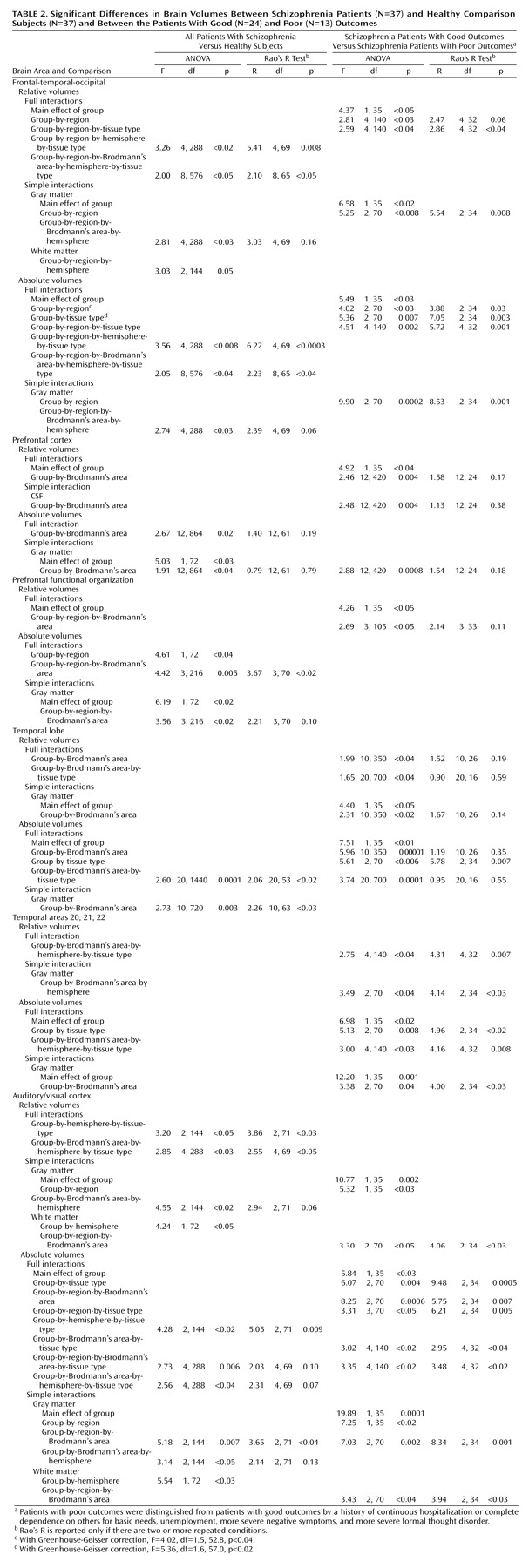
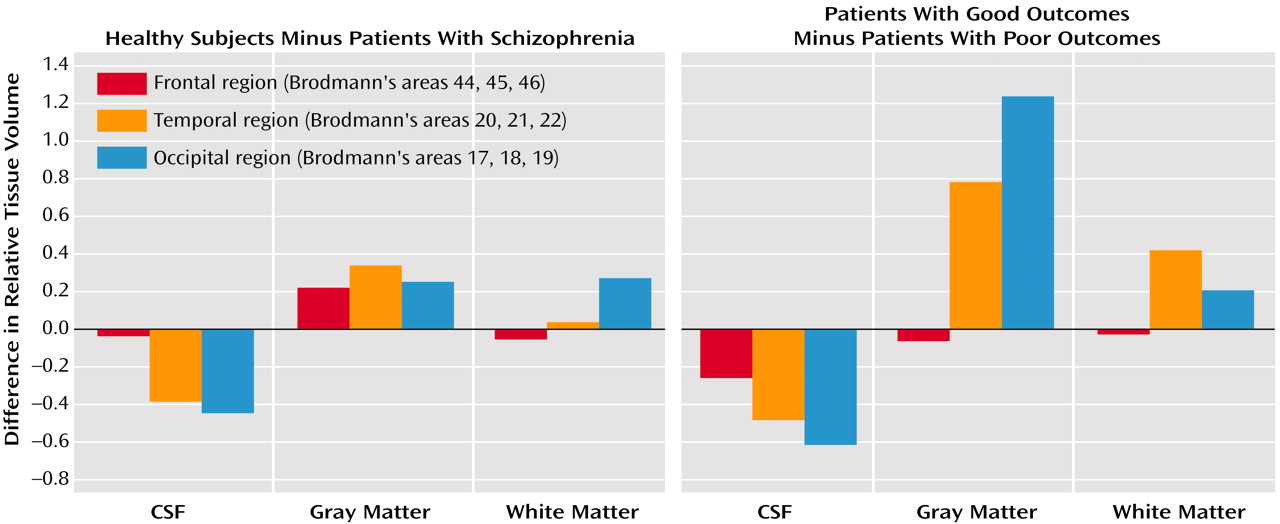
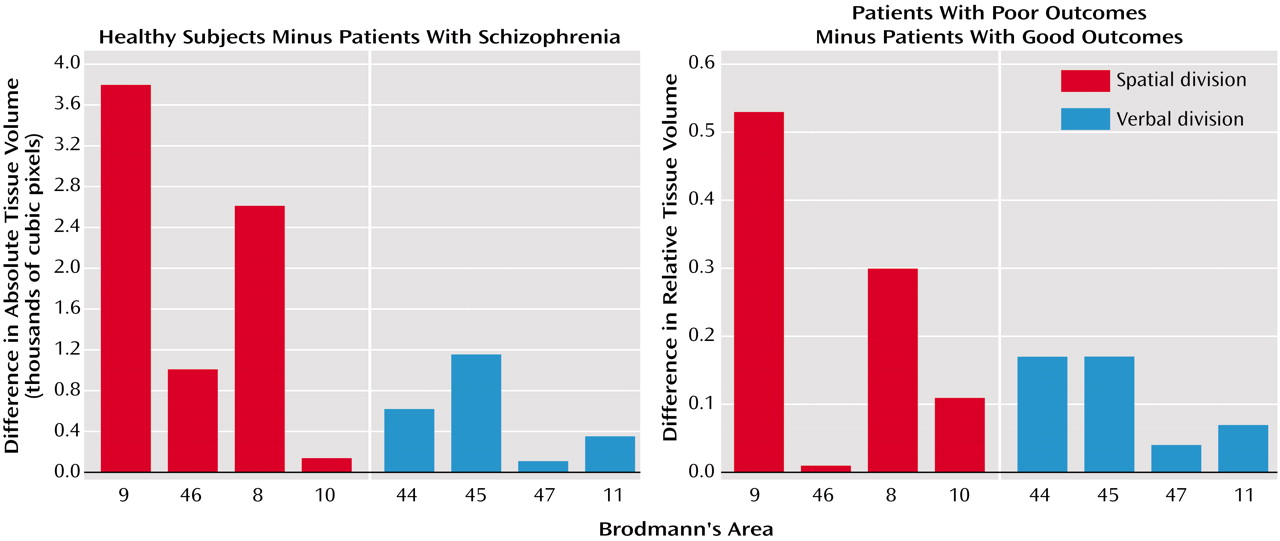
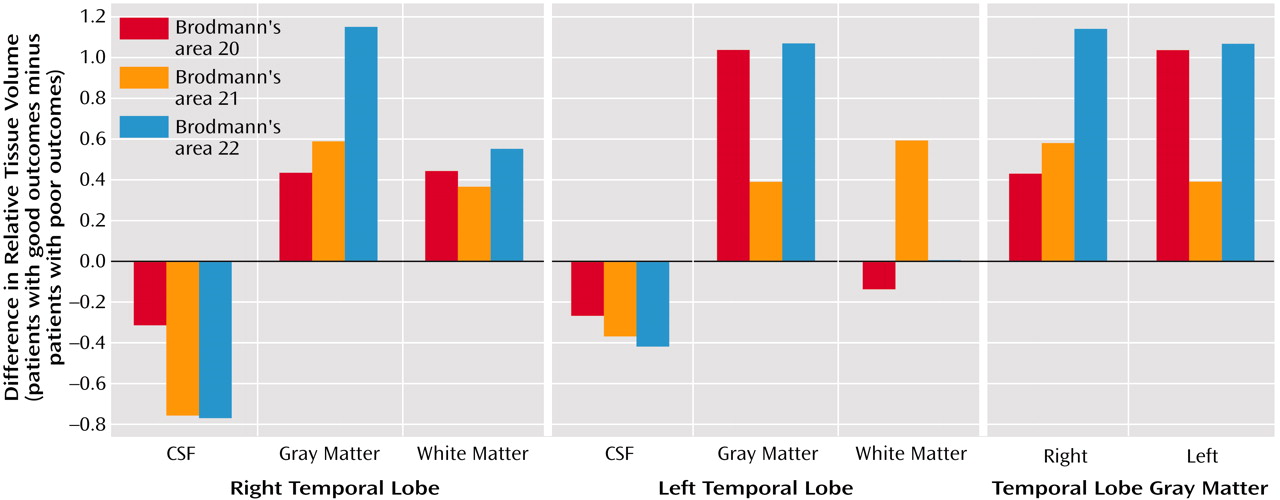
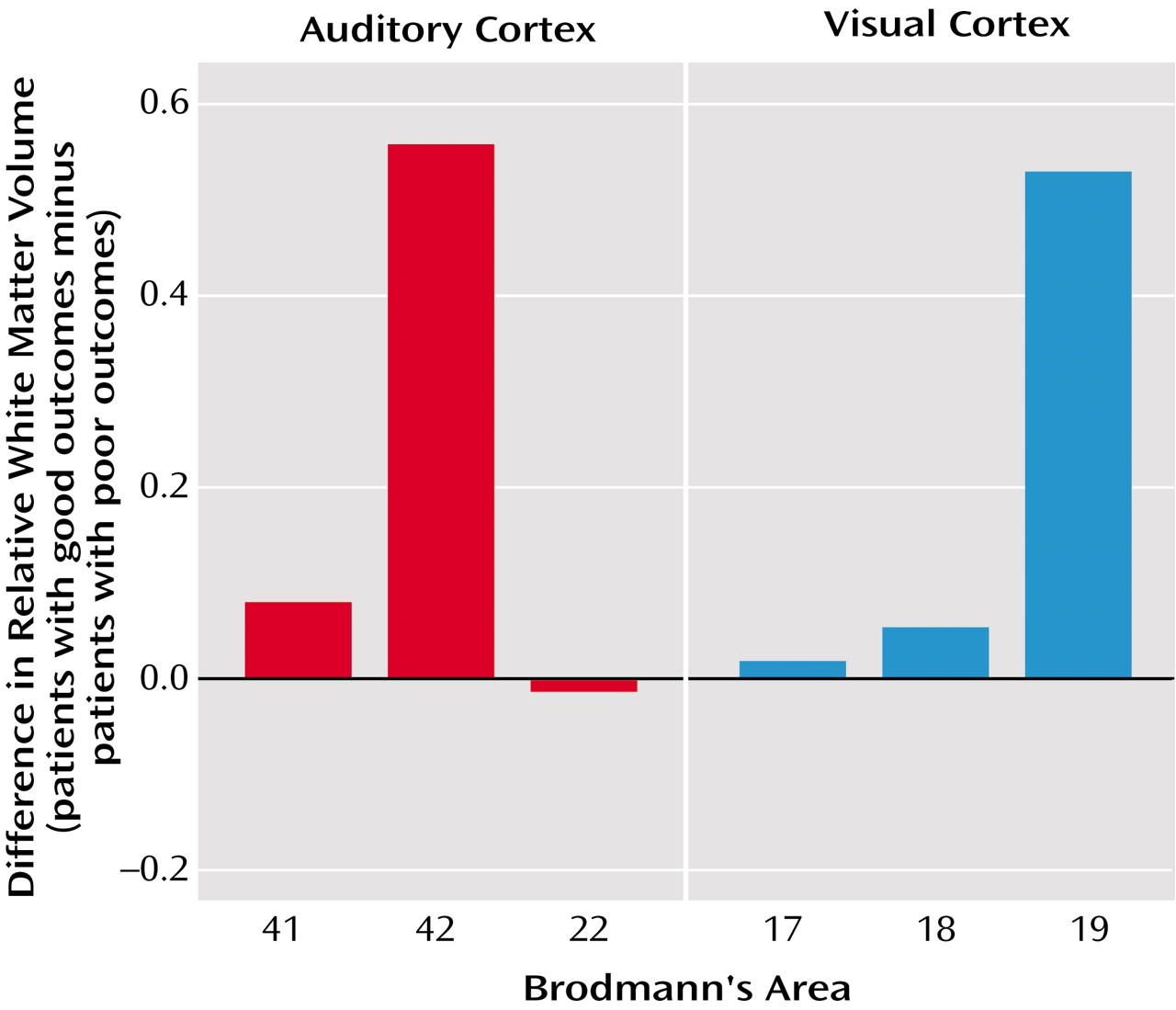
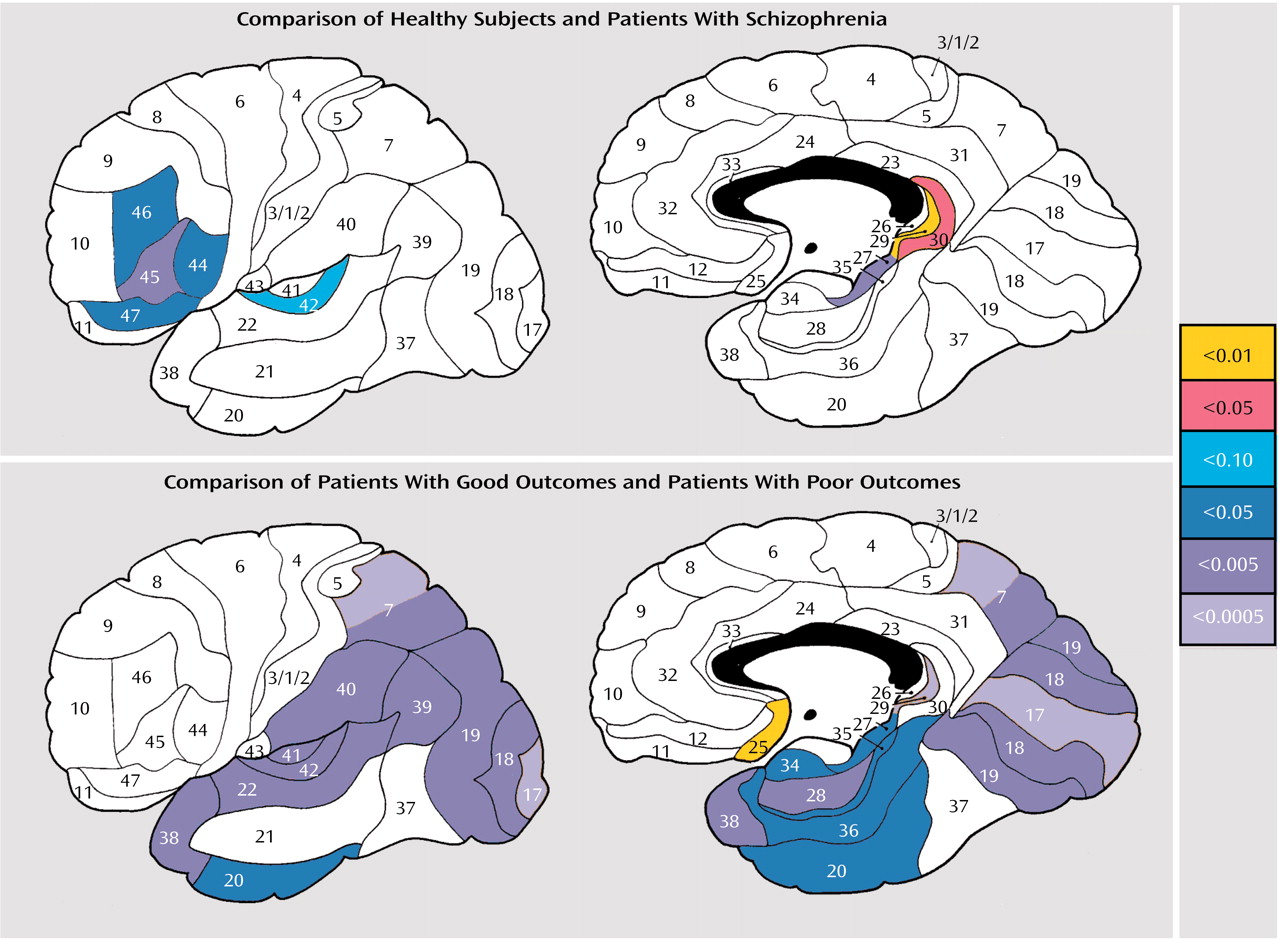
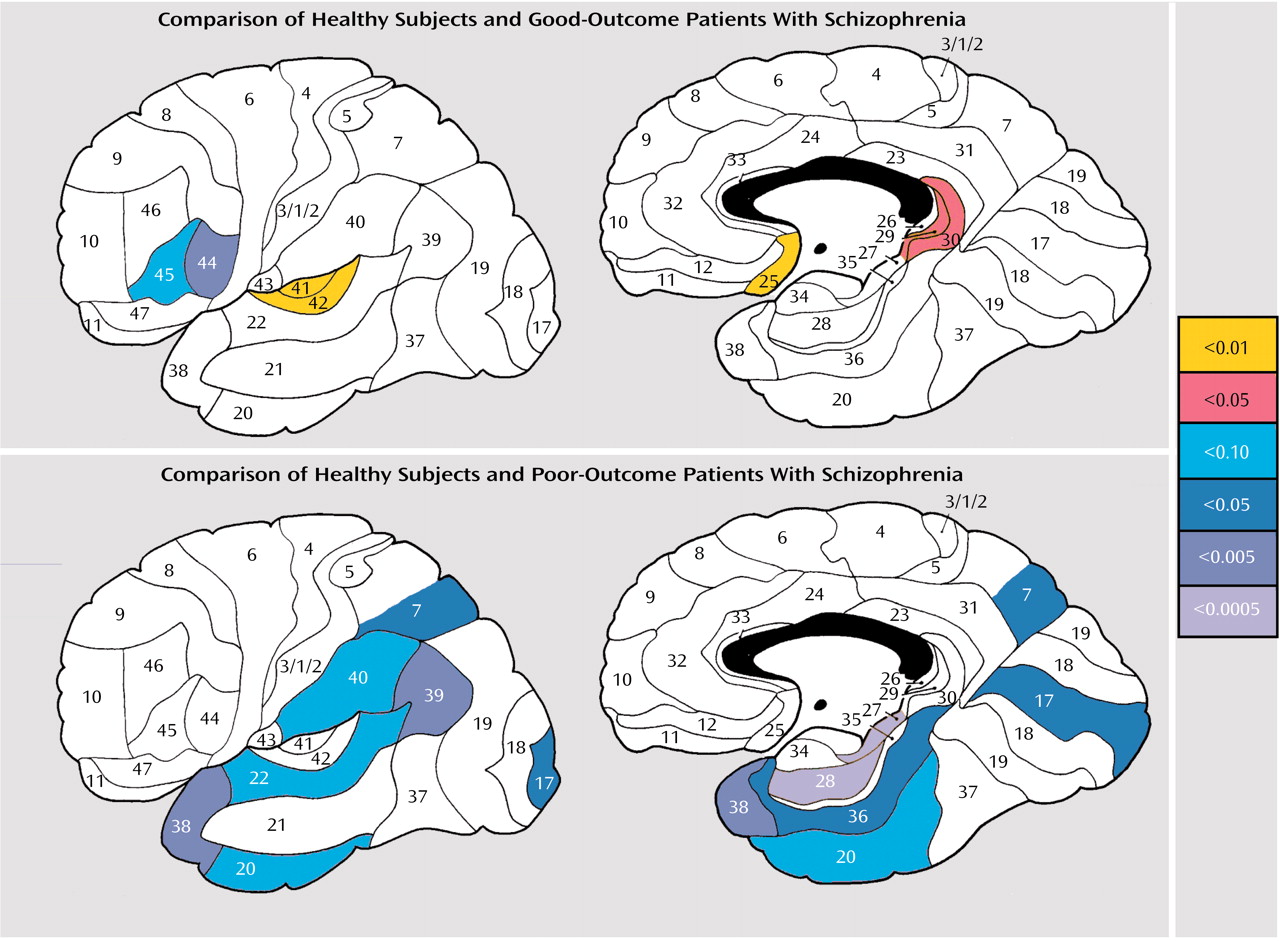
Footnote
References
Information & Authors
Information
Published In
History
Authors
Metrics & Citations
Metrics
Citations
Export Citations
If you have the appropriate software installed, you can download article citation data to the citation manager of your choice. Simply select your manager software from the list below and click Download.
For more information or tips please see 'Downloading to a citation manager' in the Help menu.
View Options
View options
PDF/EPUB
View PDF/EPUBGet Access
Login options
Already a subscriber? Access your subscription through your login credentials or your institution for full access to this article.
Personal login Institutional Login Open Athens loginNot a subscriber?
PsychiatryOnline subscription options offer access to the DSM-5-TR® library, books, journals, CME, and patient resources. This all-in-one virtual library provides psychiatrists and mental health professionals with key resources for diagnosis, treatment, research, and professional development.
Need more help? PsychiatryOnline Customer Service may be reached by emailing [email protected] or by calling 800-368-5777 (in the U.S.) or 703-907-7322 (outside the U.S.).

